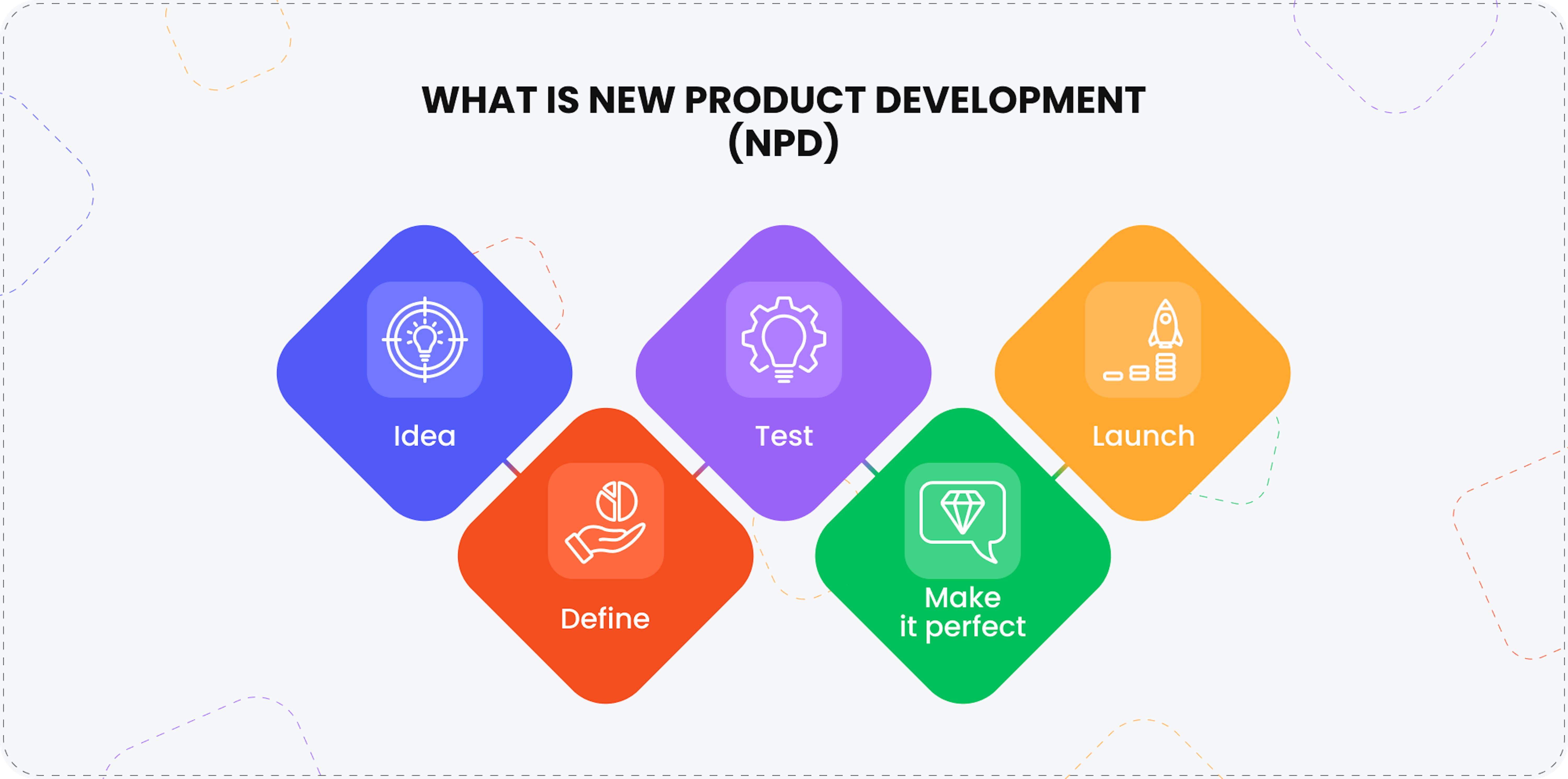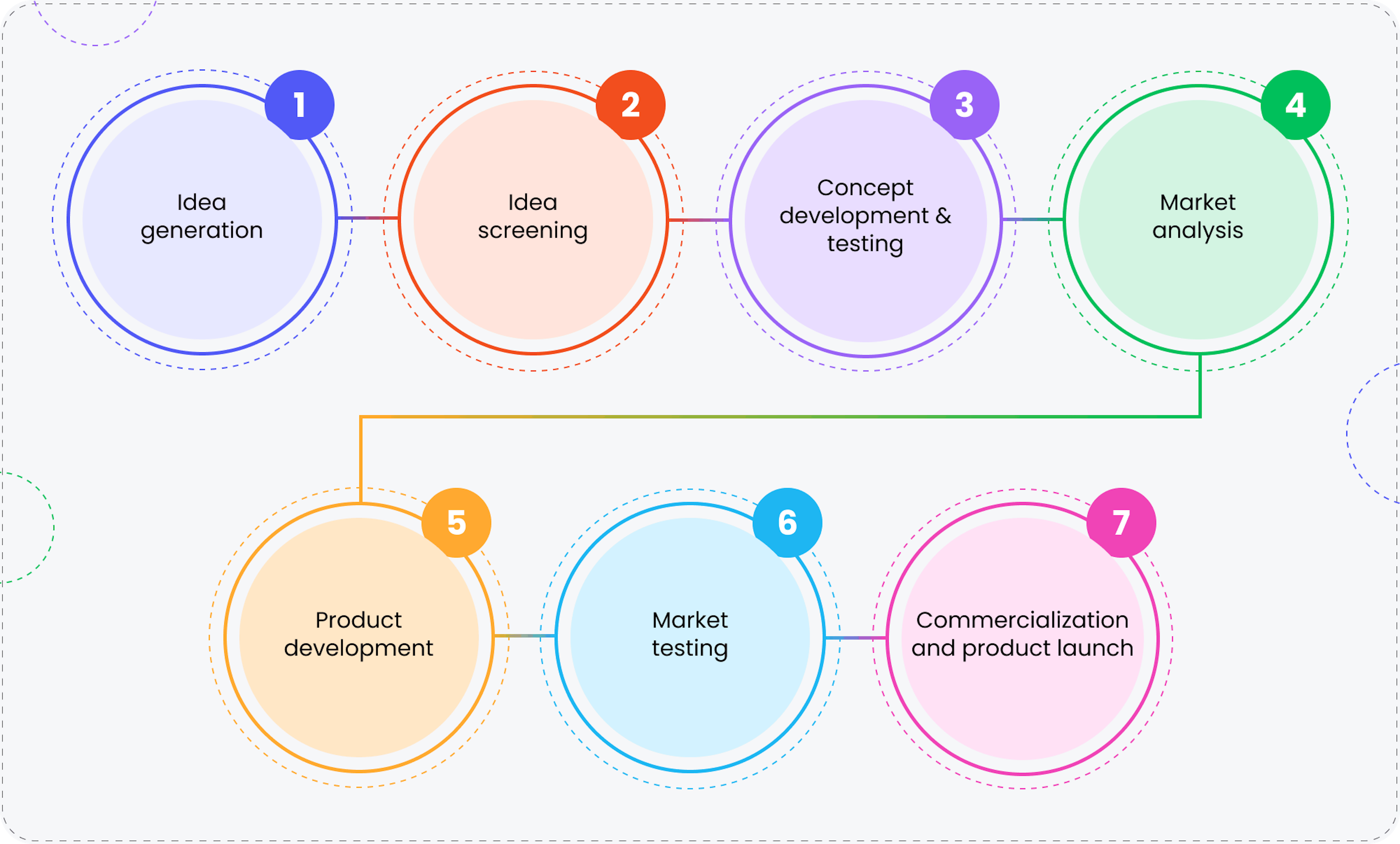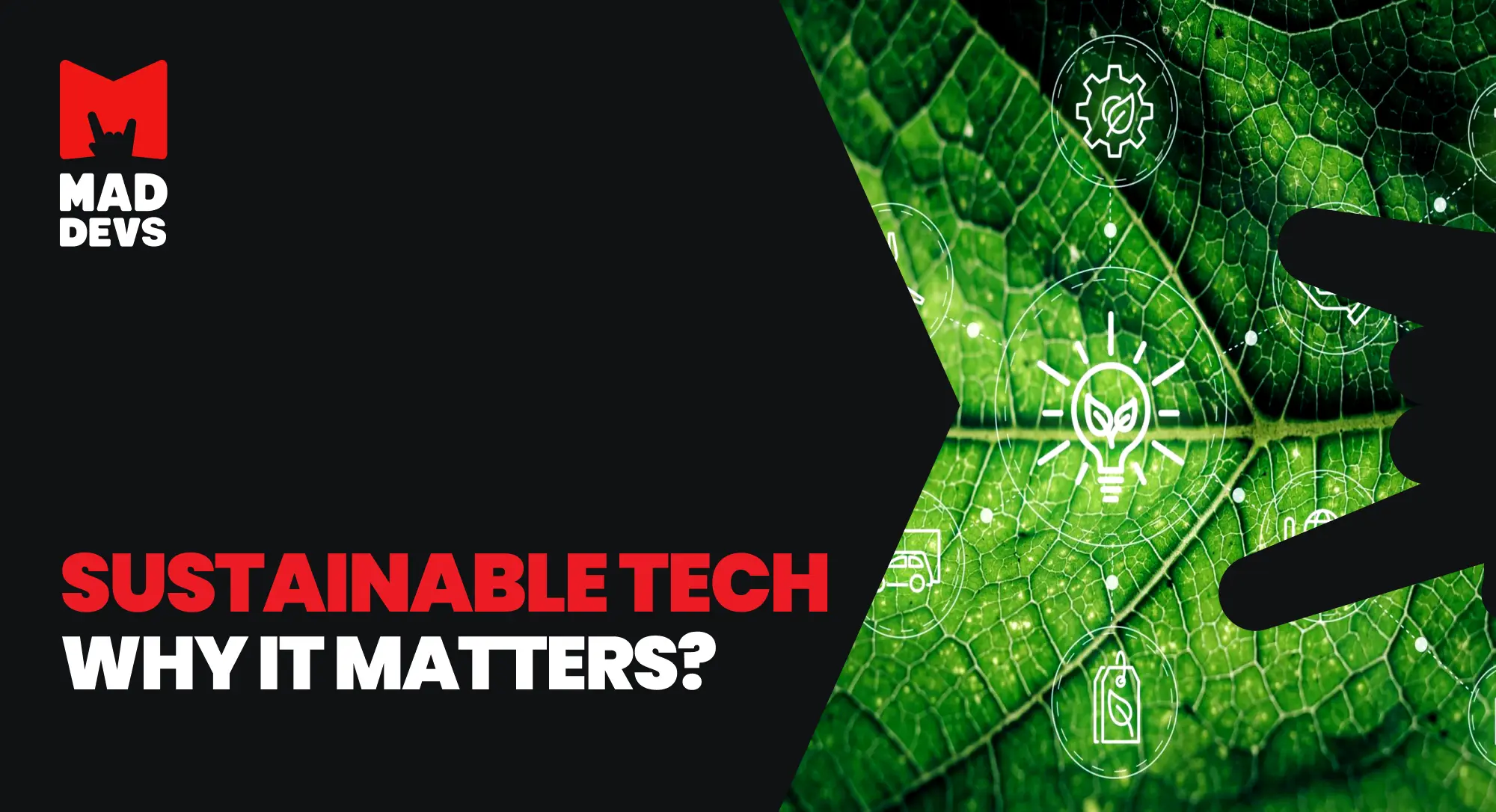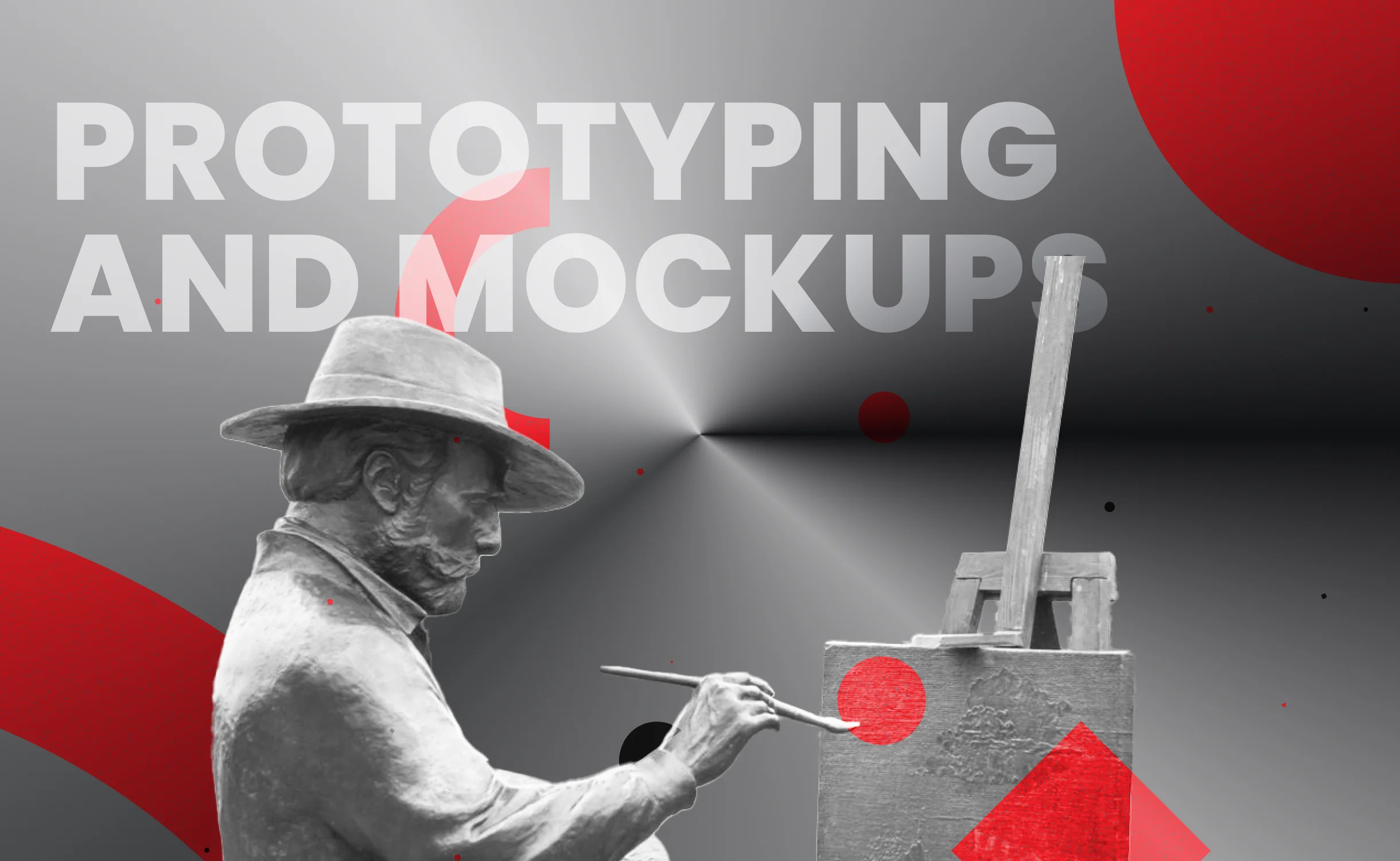Every breakthrough product was once an idea, but what leads an idea to become a market success? As of 2023, the software development market was worth approximately $659.01 billion and is expected to reach more than $898 billion by 2029, with a compound annual growth rate (CAGR) of 26.67% between 2024 and 2029.
But here's the catch: Shaping the road from idea to market is not a walk in the park. It is about tackling challenges, developing ideas, and making sure that your product is ready for the market, it meets the needs of the customer and is far from what the competitors are offering.
Whether you are coming up with a new concept or trying to make an existing one better, you have to know how the New Product Development (NPD) process works. It's more than just a thinking process, it is a systematic approach to converting ideas into viable and marketable products through the integration of research and development, engineering, and marketing. Whether you are a startup or an established company, controlling NPD could be the reason between a product that hits and one that misses.
In this article, we will define NPD, discuss the various stages of the process, and discuss how it is beneficial for businesses. It also includes examples of real-life products that have revolutionized industries through innovation.

When do you need new product development
In general, NPD can be broken down into 6 categories and depends on the type of product. Here are they:
1️⃣ Brand new product
It introduces innovation that is introducing entirely new markets. For example, think of the first notebooks, which brought tech into homes, or the first smartphones, which revolutionized communication. These products define markets and also present high risks. There is no proven market, no clear demand, and a lot of uncertainty. It demands more than ideas and ambitions; it requires strategy.
Solution: Conduct market research and product discovery. The main questions that should be considered are
- What do customers need to validate your product's success?
- Which design is aligned with the customer's expectations?
- What steps can be taken to prove that a product is market-ready?
2️⃣ New product infirm
These products already exist in the market but are new to your company. For example, a brand that specializes in custom web development expands into DevOps services and cloud computing consulting. The main challenge here is competition with existing market leaders. To avoid them, there are three main strategies:
- Market research — Identifies gaps where business struggles.
- Conduct competitive analysis — Reveal similar product's weaknesses
- User feedback — Engage with potential clients to understand pain points.
3️⃣ Additions to product lines
These products typically introduce new versions and variations of existing ones. For example, software updates bring new features, bug fixes, and improvements to user interfaces. The main purpose is to keep the product relevant and aligned with customers' and markets' needs.
4️⃣ New product platforms
It is possible to develop a new product or technology platform and use it as the foundation for several future innovations that can support long-term growth. This allows firms to develop several future products that are all supported by a single technology platform.
A great example is OpenAI, which has developed GPT-based language models for various applications, including ChatGPT and API integrations in other businesses.
5️⃣ Joint ventures and licensing
Companies can collaborate through joint ventures or licensing agreements to co-develop, co-market, or integrate technologies, reducing risks and development costs. It shares dangers and costs of technology development, marketing, or integration through joint ventures or licensing agreements.
It is not just about innovation that one can consider successful new product development—strategy, execution, and market fit are involved. Whether it is a company launching a new, revolutionary product, expanding its services, or acquiring a competitor, the right approach determines between a market leader and a failed attempt.
Focusing on research, differentiation, and strategic positioning can enhance all the following, increasing the chances of success and long-term growth.
Why the NPD process matters
The new product development lifecycle ensures that your product aligns with market needs, minimizes risks, and maximizes the likelihood of success.
According to the Grand View Research's report, the global product design and development services market was valued at $17.06 billion in 2023 and is expected to grow at a compound annual growth rate (CAGR) of 10.08% from 2024 to 2030.
Benefits of NPD for organizations:
- Greater competitive advantage — Companies can outcompete their rivals by meeting or anticipating market trends and consumer demands.
- More revenue opportunities — Products that solve problems or even enhance current solutions have the potential to capture a large market share.
- Risk management — A systematic NPD process can help to reveal possible problems before they become costly mistakes.
- Innovation culture — Organizations with strong NPD practices develop creativity and collaboration to sustain growth in the long run.
- Adaptation to customer needs — NPD helps organizations to adopt changing customer needs and be customer-focused.
- Resources optimization — Optimization of the processes eliminates waste and guarantees product development at minimum costs.
- Brand's image support — Innovation is always beneficial for the brand and makes the company's reputation to be a leader in the market.
- Business sustainability — A strong NPD process supports the long-term success of a business and its ability to adapt to changing market conditions.
Remember, following a structured approach can transform ideas into tangible, market-ready products.
Digital transformation in NPD
Digital transformation is changing the way of New Product Development (NPD) with the help of new technologies, automation, and decision-making based on big data. Through the use of sophisticated digital tools, it is now possible for companies to cut development expenses, improve cooperation, and design products that are more likely to meet customer needs and requirements in the shortest time possible.
Here are some trends that influence the way how NPD changed in modern times:
AI and machine learning
Artificial intelligence (AI) and machine learning (ML) are changing the product development process by enabling:
- Use of predictive analytics for understanding market trends and customer preferences and achieving product-market fit.
- Automated design optimizations that lead to product feature changes based on performance data and user behavior.
- Intelligent testing to find out where the product may fail and hence avoid costly reworks.
Digital twins and simulation
A digital twin is a virtual copy of a physical product that lets you do real-time testing, analysis, and optimization. Thus, businesses can simulate various conditions and user interactions to:
- Reduce prototyping costs by avoiding unnecessary physical iterations.
- Increase productivity through early troubleshooting of defects before manufacturing.
- Enhance product performance through ongoing design improvements based on real-time feedback.
Cloud-based collaboration
Cloud platforms make it easy for teams to collaborate when some or all of the team is remote or across different time zones, which results in: This eliminates:
- Real-time document and prototype sharing, which minimizes miscommunication.
- It is an automated version control so that members of the team are always working on the latest product iteration.
- It is scalable and flexible, so companies can grow their R&D functions without having to invest heavily in infrastructure.
The following are some popular cloud computing platforms that are used to support product design collaboration, including Microsoft Azure, AWS, and Google Cloud.
IoT integrations
The Internet of Things (IoT) is changing the way of NPD by making products smarter and more connected. The major benefits are:
- Continuous product optimization through real-time performance monitoring.
- Actual user behavior that can be used to help make data-driven decisions and fine-tune features.
- Predictive maintenance can decrease downtime and increase product longevity.
Sustainability and eco-design
Sustainability is gradually becoming central in product development; this is because of consumer pressure and policy changes. Companies are adopting:
- Environmentally friendly materials that are friendly to the environment.
- The principles of the circular economy to develop products with the thought of recycling and reusing them.
- Energy-saving manufacturing processes to decrease carbon emissions.
Some examples of brands that successfully integrate sustainability into their NPD strategies, and achieve the marketing communication objectives include Patagonia and Tesla, whose NPD strategies are in line with the UN Sustainable Development Goals.
The 7 key phases of new product development
Every journey to a finished product in new product development is different. Although the process may differ from one company to another, seven main stages can be distinguished. It will be helpful to consider them one by one.

1. Idea generation
The foundation of any product begins with ideas. Brainstorming sessions, market research, and identifying gaps in existing solutions are crucial steps in this phase.
Tip: Collaborate with stakeholders and end-users to uncover pain points and unmet needs.
2. Idea screening
Not every idea will be viable. Evaluate each concept against factors like market potential, technical feasibility, and alignment with your business goals.
3. Concept development and testing
Develop a detailed concept and gather feedback from a target audience. At this stage, prototyping can help refine the product vision. Learn more about the importance of prototyping in our article on software prototyping and mockups:
4. Business analysis
Conduct a thorough market analysis, estimate costs, and forecast revenue potential. This phase validates whether the product is worth pursuing.
5. Product development
With a clear concept and business case, it's time to build the product. It involves:
- Designing the user experience (UX)
- Engineering development
- Testing the prototype
6. Market testing
Launch a beta version or pilot program to collect real-world feedback. This step helps you identify potential issues before a full-scale launch.
7. Commercialization
Launch your product and plan your launch strategy, marketing campaigns, and distribution channels to ensure maximum impact.
Common challenges in developing a new product
In developing new products, teams may face challenges that can often hinder progress, extend timelines, or even affect the quality of the final output. Some of the most common challenges are outlined below:
Lack of market understanding
Challenge: Failing to assess market demand or understand your target audience's needs.
Impact: The product may not connect with the intended users, which can lead to poor sales and low adoption.
Solution: Conduct thorough market research, customer interviews, and competitor analysis before development begins.
Technological challenges
Challenge: Choosing the wrong technology stack or facing unexpected technical limitations.
Impact: This can lead to long development time, increased costs, or a product that fails to perform optimally.
Solution: Involve experienced technical architects early in the process, conduct feasibility studies, and prioritize scalable technologies.
Budget constraints
Challenge: Underestimating development costs or overspending on unnecessary features.
Impact: Running out of resources before the product is ready for launch.
Solution: Establish a detailed budget, monitor expenses, and allocate resources to high-priority tasks.
Poor risk management
Challenge: Failing to anticipate risks such as market changes, competitor moves, or development delays.
Impact: Missed deadlines, increased costs, or failure to deliver a competitive product.
Solution: Develop a risk management plan that identifies, assesses, and mitigates potential risks.
Time to market pressure
Challenge: Rushing the product to market due to competitive or internal pressures.
Impact: A product that is buggy, poorly designed, or incomplete.
Solution: Balance speed and quality by creating realistic timelines and focusing on iterative development.
Insufficient user feedback
Challenge: Developing the product without involving end-users during the process.
Impact: Building features that users don't want or failing to address their pain points.
Solution: Gather user feedback early and often through usability testing, beta programs, and focus groups.
Regulatory and compliance issues
Challenge: Overlooking legal requirements or industry standards.
Impact: Fines, lawsuits, or delays in launching the product.
Solution: Research regulatory requirements in your target market and consult with legal experts early on.
Scaling challenges
Challenge: Designing a product that can't scale to meet growing demand.
Impact: Performance issues, user dissatisfaction, and costly re-engineering.
Solution: Build with scalability in mind by choosing appropriate technologies and planning for future growth.
Difficulty in differentiating
Challenge: Creating a product that doesn't stand out in a crowded market.
Impact: Struggles to attract customers and gain market share.
Solution: Focus on unique value propositions (UVP) and innovations that set you to differentiate your product-launch challenges
Product-launch challenges
Challenge: Insufficient support for customers or challenges in iterating based on feedback.
Impact: Negative user experiences and low customer retention.
Solution: Plan for post-launch support, including clear feedback channels and continuous updates.
Real-life examples of successful NPD
It is time to look at some new product development examples of companies who really pioneered product development and how they went about innovating the market:
Spotify

Challenge: Overcoming issues of music piracy and creating a sustainable model for music streaming.
Solution: Partnered with record labels to offer a legal alternative to music piracy. Introduced a freemium model: free ad-supported streaming with an option for paid subscriptions. Personalized the user experience with curated playlists and discovery tools.
Outcome: Spotify disrupted the music industry and became a global leader in music streaming. According to its Q3 2024 filing, it has over 252 million subscribers.
Apple iPhone

Challenge: Entering an established mobile phone market dominated by companies like Nokia and BlackBerry, while creating a product that merges a phone, internet device, and music player.
Solution:
- Focused on user-centric design and a seamless interface.
- Prioritized simplicity and innovation (touch screen, App Store).
- Anticipated future trends, like apps, to build a scalable ecosystem.
Outcome: The iPhone revolutionized mobile phones, created the smartphone era, and became Apple's flagship product, generating billions in revenue annually.
Slack

Challenge: Competing with established communication tools like email and project management software in a market.
Solution:
- Designed a user-friendly interface with instant messaging and easy integration with tools like Google Drive, Trello, and GitHub.
- Focused on team collaboration and made communication searchable, accessible, and fun.
- Offered a freemium model to encourage adoption by smaller teams and startups.
Outcome: Slack became a staple in workplace communication, with millions of users and eventual acquisition by Salesforce for $27.7 billion.
Open AI

Challenge: Making artificial intelligence accessible and useful for businesses and individuals.
Solution:
- Developed GPT-based AI models, allowing businesses to automate tasks like content generation, coding assistance, and customer support.
- Launched ChatGPT, an AI chatbot with a user-friendly interface for professional and personal use.
- Created API integrations that allow companies to integrate AI into their own products.
Outcome: OpenAI sets standards for AI-powered applications, influencing industries ranging from customer service to software development. According to a Statista's report, over 200 companies in the technical and educational industries used ChatGPT for multiple purposes.
How we can help
New Product Development (NPD) is the process of converting ideas into physical products that can help solve specific customer problems with the help of research and development. While product improvement builds on the existing products, new product development begins from scratch, from the generation of ideas, through research and development of the product concept, and up to the market launch.
We provide dedicated consulting services for teams creating new products. Whether you are iterating on an MVP, building prototypes, or handling full product launches, we guarantee your project stays on track. Backed by years of experience across industries, including AdTech, AI/ML, and enterprise solutions, we are here to assist you in your pursuit of success. Therefore, if you follow a new product development procedure and work with experts, you should be able to accomplish your goals with the least trouble.
Contact us today for a free consultation, and let's turn your vision into reality.











